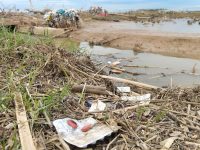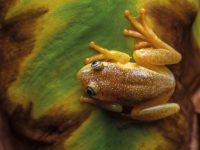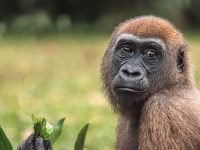The interface between humans and other primates
The case of the Republic of Guinea-Bissau
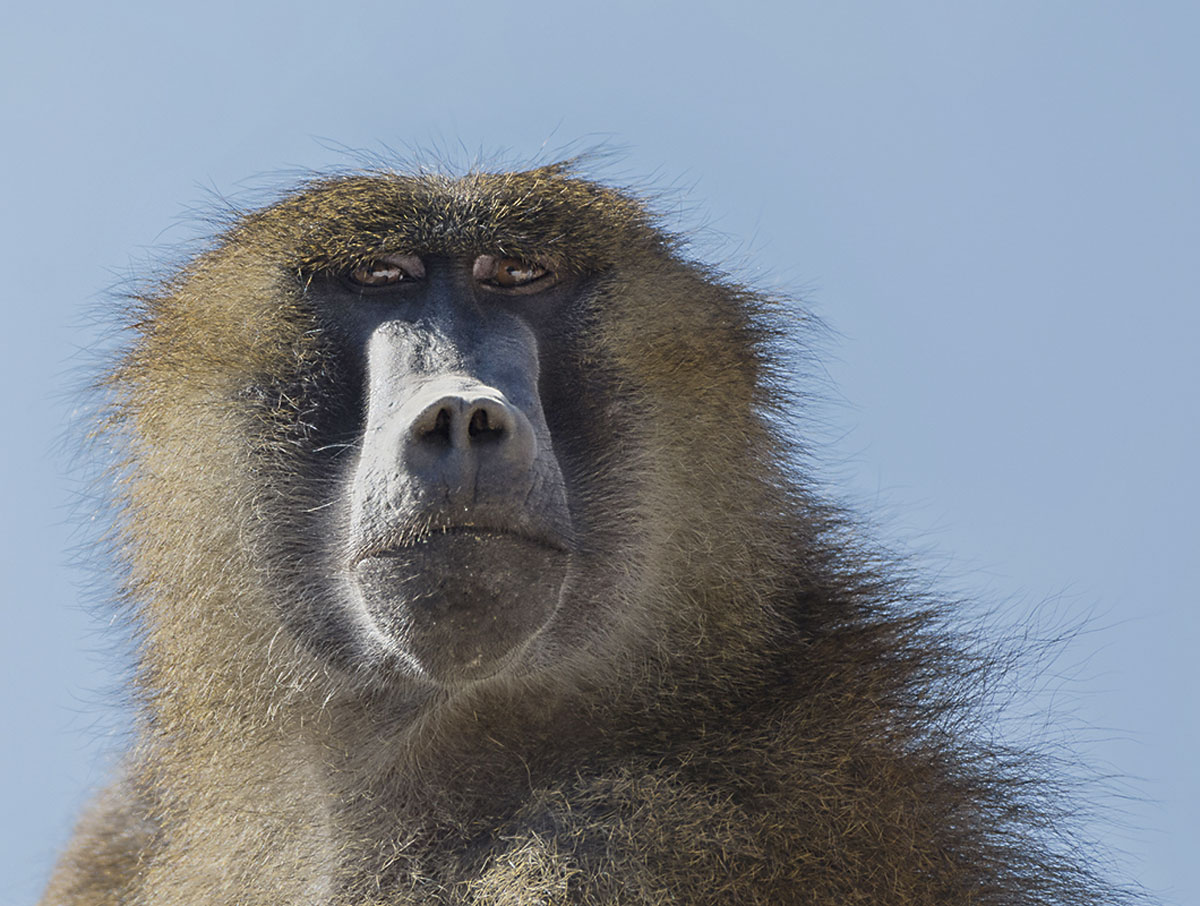
With this paper we invite the reader to join us to a field trip to Guinea-Bissau through our eyes as primatologists and to explore the entanglements between humans and non-human primates. The first time we went to the field was in 2003. After staying with an NGO for a while, we set up a field station in a protected area that was home to chimpanzees (Madina Field Station). However, soon we realized that «protected areas», «high-quality forest», or «suitable habitat for chimpanzees» would not make any difference for research – and, most importantly, for this ape’s conservation – without taking into consideration the locals’ attitudes. Humanized landscapes most probably will become the rule in the future, so finding a way for a peaceful coexistence is urgent.
Keywords: chimpanzees, local communities, shared ecologies, anthropogenic landscapes, conservation.
Guinea-Bissau is a tropical country located between Senegal in the north and Guinea-Conakry in the south, on the West African coast. Within its rich biodiversity one finds more than a dozen primate species, including galagoes (Galago senegalensis), colobuses (Colobus polykomos and Piliocolobus badius), patas monkeys (Erythrocebus patas), several species of the Cercopithecus and the Cercocebus genera, baboons (Papio papio), and Western chimpanzees (Pan troglodytes verus) (Casanova et al., 2014). According to the Red List of Threatened Species by the International Union for the Conservation of Nature (IUCN, 2023), the global conservation status of these primate species varies between «least concern» (e.g., green monkeys, Chlorocebus sabaeus, and galagoes) and «endangered» (e.g., colobuses and chimpanzees), and most of them show a marked decrease in their populations. This situation is mainly due to human population growth, which in Guinea-Bissau has doubled in the last three decades (Worldmeter, 2023).
Most of the primates present in Guinea-Bissau (except for the smaller galagoes and chimpanzees) are hunted for their meat, sometimes at rates that are almost certainly unsustainable. As an example, one study using a DNA barcoding method estimated that during the 2010 dry season 1,550 individual primates were sold in two markets in Guinea-Bissau (Minhós et al., 2013). Bushmeat is consumed in specialized bushmeat restaurants but also at home, mainly in rural areas (national parks included). Some parts of several primates are used as medicine (baboons or chimpanzees). Hunting primates is thus profitable, as illustrated by the fact that in the cities of Bissau, Buba, and Bambadinca the meat of primates is more expensive than that of poultry (Casanova & Sousa, 2007; Casanova et al., 2014). Chimpanzees are considered ancient members of present human families: they used to be people but they took the appearance of chimpanzees when they were punished because they worked (as blacksmiths) on Sundays. Now they are thought to be doomed to live in the forest with irãs, magical and religious animistic entities (Casanova et al., 2014).
Habitat loss, degradation, and fragmentation is the second major threat for Guinea-Bissau primates, and it is primarily due to agricultural expansion and intensification of both crops and livestock, charcoal production, logging, mining, and human settlements, as well as the creation of road networks (Casanova et al., 2014; Minhós et al., 2013). Forest fragmentation, where small patches of forest are kept more or less isolated from each other – with no safe corridors between them – is especially problematic, since it impairs the movement of animals with large territories, increases competition for resources and prevents genetic flow between populations, therefore increasing endogamy and the probability of genetic disorders. Only between 2001 and 2021, Guinea-Bissau lost 18 % of its forest cover, and nowadays the upper Guinean rainforest is considered one of the most severely threatened forest systems in the world (Global Forest Watch, 2023).
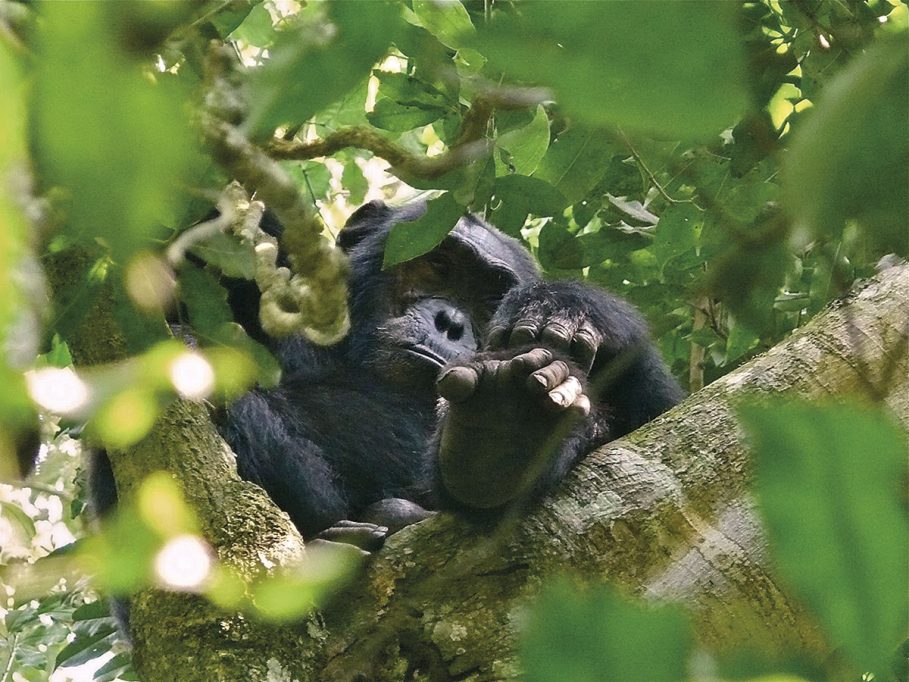
Image of a chimpanzee, the chosen umbrella species in Cantanhez National Park and other protected areas. In Cantanhez, chimpanzees were seen as similar to humans, which made their meat consumption a taboo, but they were also perceived as astute thieves that knew when and where to successfully steal fruit from the farms, so they were frequently killed due to their «bad» behaviour. / Bernard Dupont
These threats, together with others, like killings to protect crops, keeping primates as pets, or the transmission of infectious diseases affect primates’ population sizes and genetic quality, but also their behavior. For instance, the Guinea baboon (Figure 1), which in the 1980s used to be described in troops of 800 or 900 individuals outside the city of Bissau, can now only be seen if we go deep into the forest. According to descriptions from hunters (C. Casanova, personal information, 2017), many baboons used to sleep in the mangrove instead of high trees as a way to escape the night hunts where local hunters would take foreign hunters to hunt as a sport.
Conservation efforts done for primates include, among others, controlling their international trade through the Convention on International Trade in Endangered Species of Wild Fauna and Flora (CITES). Guinea-Bissau also signed the African Convention on the Conservation of Nature and Natural Resources, which gives special protection to primates and enforces, among other things, the designation of conservation areas, the adoption of adequate legislation for conservation, and the establishment of an agency empowered to deal with all matters of the convention.
The Instituto da Biodiversidade e da Administração da Natureza (IBAP) is the national institution in charge of all the national parks and reserves in Guinea-Bissau. Unfortunately, due to the lack of funds, some parks exist only on paper: they were created by law but have no infra-structures, no guards, no monitorization, and no law enforcement. In other parks (e.g., Cufada, Cachéu) there are guards, although they lack technical equipment to communicate with each other, which makes it difficult for them to pursue hunters. In fact, it is the DGA (Directorate General of Environment) that is allowed to fine hunters and people who are found selling, buying, or cooking bushmeat. In other parks (e.g., Cantanhez), the guards are communitarian (they were chosen by the communities and are not paid a salary from the state). All this makes effective conservation difficult. Moreover, environmental education programs are not a priority in one of the poorest countries in the world (where teachers often go to the countryside to farm and feed their families, in strikes that can range from 5 to 7 years-long). Some NGOs also operate in the country.
Our research in two Guinean protected areas
Guinea-Bissau has several protected areas (IBAP, 2023). Three of them are located in the Bolama-Bijagós Biosphere Reserve (Bijagós archipelago). In the continental area, Cachéu Mangroves Natural Park is the oldest (1997). And then there is Lagoas de Cufada Natural Park, in the south, and Cantanhez National Park, near the border with the Republic of Guinea. Dulombi and Boe are also protected areas and were suggested by Casanova and Sousa (2007) as essential to maintain corridors for primates. People living in these «reserves» are totally dependent on the ecosystem services, and as such they ignore the conservation rules, as they have no other option to feed their families (Costa, 2010).
Lagoas de Cufada Natural Park and Cantanhez National Park were chosen to be part of our research project due to their biodiversity, and particularly because they are both habitats for chimpanzees (Figure 2). When we arrived there in 2003, our main goals were conducting chimpanzee censuses and studying chimpanzee’s (and other primates’) ecology. Also, we wanted to assess issues regarding human–nonhuman primate interactions (e.g., crop-raiding and local people’s regard for national parks) (Costa, 2010). During these years in Africa, we have witnessed forest destruction, not only due to the farming processes conducted by the locals, but also because of endless monoculture fields exploited mainly by the Global North companies looking for high profits: avocado, «green fuel» (palm oil), cashew, soya and other «cash crops» that may not contribute directly for the development of local human communities (Lundy, 2021; C. Casanova & G. Jesus, personal observations, July 2022). Also, we have sadly noticed that less and less primates are seen each year. As a positive note, we have contributed to environmental education by offering workshops on environment and species protection to local children in schools. Moreover, through our studies we have gained knowledge on the interface between humans and other primates that hopefully will help devise better conservation strategies in the future. Below we describe some of our findings.
Lagoas de Cufada Natural Park
Lagoas de Cufada Natural Park is located in the eastern region of Quínara, southern region of Guinea-Bissau. When the park was created (December 2000) it covered an area of 890 km2 with 3534 people distributed within 33 villages. There were eight ethnic groups in the territory, Balanta and Beafada being the most representative (Amador et al., 2015). Farming, particularly rice plantations, is one of the most important economic activities for the Balanta, but hunting is also vital for them since they mainly rely on bushmeat as a source of protein. In contrast, Beafada rely on bushmeat as a source of income: they do not eat it because they are Muslims, but they hunt and sell it. Hunting was allowed in Lagoas de Cufada during the dry season (from November until April) but forbidden during the rainy season (from May until October), because, according to the park staff, animals reproduce during that season. During the dry season families living inside the park were allowed to hunt animals for their own consumption: they could only take one animal at a time and those animals could only be of gazelle-size or smaller. Chimpanzees and other primates could not be hunted, and their trade was illegal at all times. Fines were not applied, however, since the park’s hunting regulations had never been formally approved (Amador et al., 2015), although some shooting guns and snares were apprehended and were shown to us every time we asked for law enforcement. So, the Cufada guards could apprehend illegal material but they could not fine the poachers.
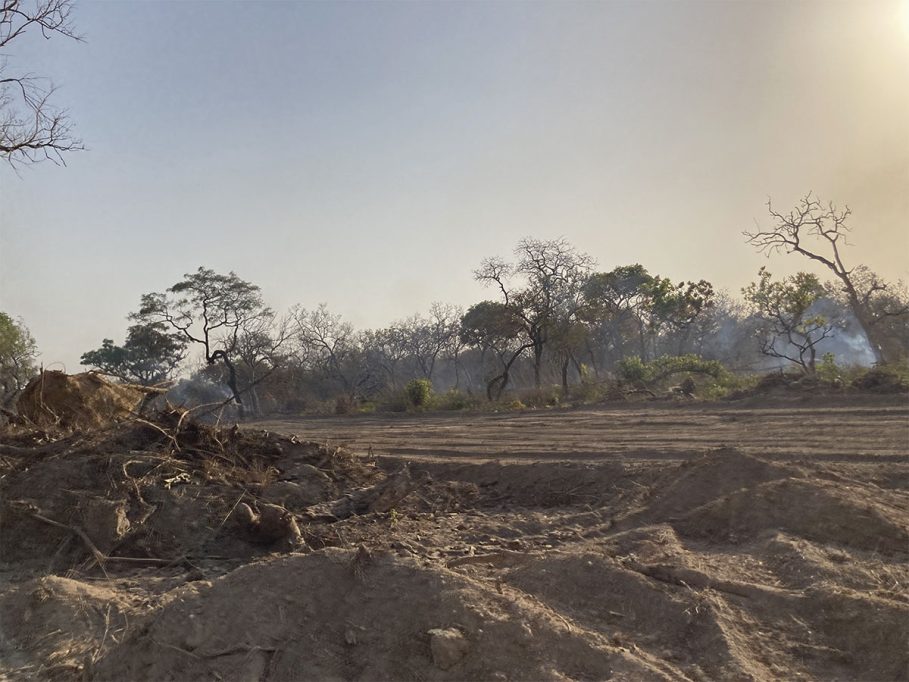
We expected that Balanta and Beafada would value and perceive wildlife differently. Therefore, we carried out surveys and interviews, focus groups, and held informal conversations to find that gender and religious background (Balanta are traditionally animistic, whereas Beafada are Muslims) determined the most differences in people’s attitudes (see Amador et al., 2015, for other methodological details). Women revealed more negative perceptions towards wildlife than men. This is probably because in most African countries men are usually in the center of decision-making processes and are frequently invited to collaborate with NGOs, which promotes a more positive attitude towards conservation. In contrast, women see protected areas as imposing rules that will make their lives harder (Costa et al., 2017). Involving them in conservation projects could change their perceptions to become more positive. Women cannot be kept aside in any conservation program. Religion also appeared to underlie major differences in the way local people perceived different species. For instance, Beafada hunters referred to primates as inedible, since eating monkeys is prohibited in Islam (though this did not stop them from hunting them with the goal to trade them for goods). Moreover, we should not forget that religion has proved useful for conservation in the past, as shown by the matos sagrados (sacred bushes/mangroves) – the forest places where ceremonies and rituals take place –, which are thought to have helped to preserve forest fragments especially in the 1980s and 90s (Casanova et al., 2014).
Both ethnic groups agreed that hunting is responsible for a great decrease in the number of primates and they recognized that there was a smaller number of game than years ago (Amador et al., 2015). Today the situation is dramatic with almost no game or signs of biodiversity due to the construction of a six lane road that crosses right through the middle of the park and the conversion of forest into plantations (Colmonero-Costeira, personal information, 2023; Figure 3). In this context of scarcity, many of the wild fruits and plants consumed by nonhuman primates are also consumed by humans and that already had extremely negative consequences in 2016 with groups of small children being attacked while feeding and collecting these resources (Figure 4). According to A. Relaga (personal information, 2017), in 2016 (the year these attacks took place) there was less rain and people collected vegetable resources to sell them in Senegal and other countries. When we are considering shared ecologies, food competition becomes serious in years in which there are fewer resources (C. Casanova, personal observation, 2017).
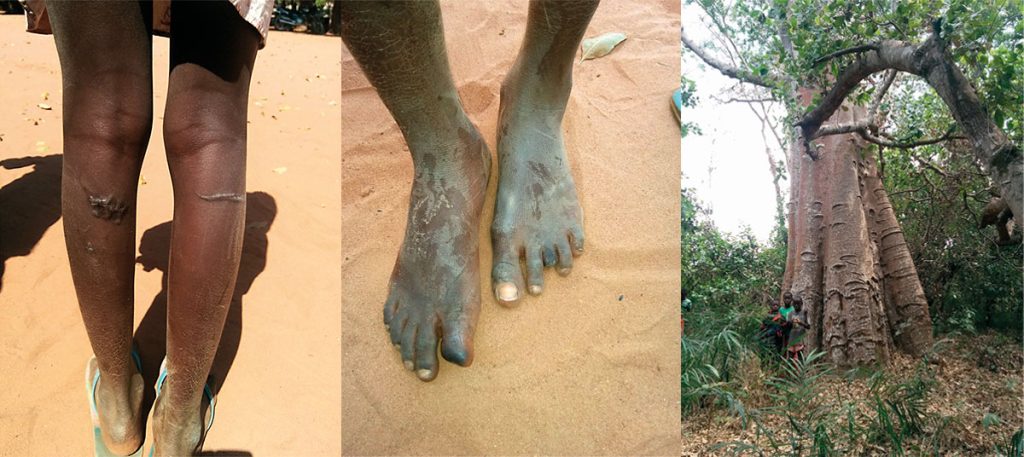
Figure 4. Children attacked by chimpanzee parties while collecting and eating wild fruits and plants also consumed by these apes (Casanova et al., 2020). Toes and fingers were bitten and some children had their legs deeply injured, requiring medical assistance. While some attacks took place on trees, others took place on the ground when children were leaving the trees. / Photos: C. Casanova
Cantanhez Forest National Park
Cantanhez Forest National Park is located in the south (Tombali) and is considered one of the poorest regions of Guinea-Bissau (United Nations Development Programme, 2022). It covers an area of approximately 1,057 km2. In 2007, Cantanhez was formally declared a national park since it is considered one of the most important biodiversity zones (Guinean forest hotspot) for the conservation of chimpanzees (IBAP, 2007). Most of the human population inside the protected area (approx. 22,000, distributed in 110 settlements) rely on farming as a source of nutrients and, as such, farming was also these people’s main economic activity. Although Cantanhez is considered tchon Nalú (the owners of the land are the Nalú) other ethnic groups live in the park such as the Balanta, Sousso, and Fula. Fishing and hunting did not occur on a professional basis and, according to the locals’ testimonies, they did not constitute main activities. However, hunting inside the park was illegal and probably people refrained from pointing out this practice as a source of income or protein. Indeed, in some interviews and informal conversations there were men who considered themselves «professional hunters». The proximity between chimpanzees and people was obvious (Figure 5).
Due to poverty and low development, locals living inside protected areas face daily life constraints and assessing these is an effective way to understand how a protected area affects people’s lives. With that aim, we used Quinn et al.’s method (2003) to calculate the severity, incidence, and risk indexes perceived by people living inside Cantanhez National Park. Locals mentioned famine as the most severe problem (Costa, 2010). Crop-raiding – the hunting prohibition was believed to have led to an increased number of raiding species – and soil salinization due to progressively shorter rainy seasons were pointed out as the origin of weak food security. Lack of money, health issues, and housing problems were also mentioned.
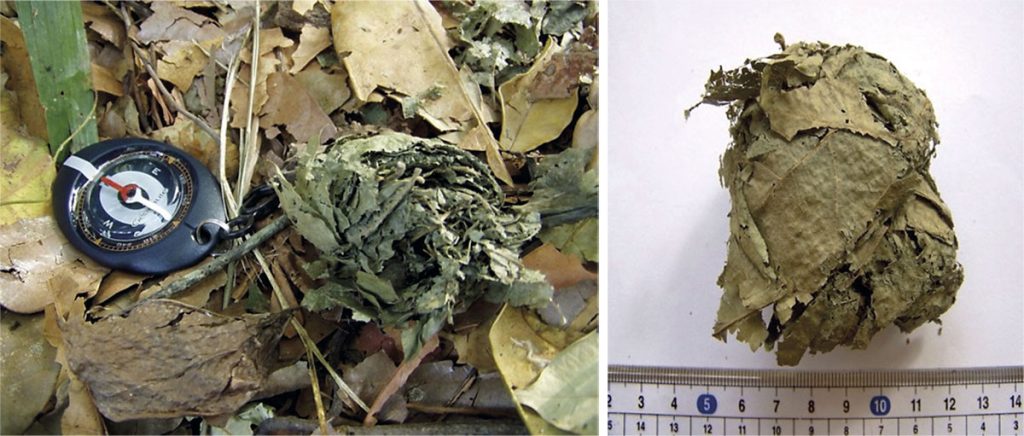
Figure 5. Sponge used by chimpanzees during the dry season in the village of Cadique Nalu, at Cantanhez National Park, Tombali (Casanova & Sousa, 2007). These photos were taken less than 20 meters away from a household in the village and are indicative of the close geographical relationship between chimpanzees and humans. / Photos: C. Casanova
In the Western societies that live under the Judaeo-Christian paradigm, animals in general are organized according to a dualistic perspective (Arluke & Sanders, 1996), into «good» or «bad», depending on the way the species behaves, how it looks and its utility. Perceptions of nonhumans, however, change across different cultural contexts. The «socio-zoologic scales» – models that organize nonhumans according to human moral judgments – revealed to be very useful in contexts where wildlife is at risk due to its proximity with human communities (Costa et al., 2013). In Cantanhez, chimpanzees were seen as similar to humans, which made their meat consumption a taboo, though they were also perceived as astute thieves that knew when and where to successfully steal fruit from the farms, so they were frequently killed due to their «bad» behaviour (C. Casanova, personal observation, 2009, 2011, 2012). Despite of this, chimpanzees were chosen as the umbrella species for Cantanhez National Park, as well as for other parks, following the Global North perception that they are a charismatic species, when other species, like gazelles – who are seen as non-competitors, beautiful, edible, and easy to hunt – would perhaps have fitted this role better.
Final considerations
Being totally dependent on the ecosystems, locals – though aware that their activities put wildlife and the forest into risk – have no alternatives. NGOs and international agencies often appear to ignore local views when designing conservation programs. However, one cannot ignore cultural diversity when it comes to protecting the environment, since biodiversity survival depends mainly on communities’ attitudes, particularly on those living inside and surrounding protected areas. Moreover, imposing «outside» strategies might be the perpetuation of colonialism and exploitation that is preventing the Global South to develop suitable agricultural systems and other ways of surviving. Humanized landscapes most probably will become the rule in the future, so finding a way for a peaceful coexistence is urgent. It is, therefore, time to make science for and with local communities and to put it at their service on their own terms, finding feasible solutions for humans and nonhumans.
References
Amador, R., Casanova, C., & Lee, P. (2015). Ethnicity and perceptions of bushmeat hunting inside Lagoas de Cufada Natural Park (LCNP), Guinea-Bissau. Journal of Primatology, 3(2), 1000121.
Arluke, A., & Sanders, C. (1996). Regarding animals. Temple University Press.
Casanova, C., Sá. R., & Sousa, J. (2020). Wild chimpanzee (Pan troglodytes verus) attacks on children in the Republic of Guinea Bissau [abstract]. 7th Iberian Congress of Primatology «Empathy, education, and conservation: Primates in a shared world». Folia Primatologica, 89, 5–6. https://doi.org/10.1159/000506768
Casanova, C., & Sousa, C. (2007). National action plan for the conservation of chimpanzee, Western red colobus and Western black and white colobus populations in Guinea-Bissau Republic. Instituto da Biodiversidade e das Áreas Protegidas. Ministério do Desenvolvimento Rural e Agricultura, Recursos Naturais e Ambiente.
Casanova, C., Sousa, C., & Costa, S. (2014). Are animals and forests forever? Perceptions of wildlife at Cantanhez Forest National Park, Guinea-Bissau Republic. In C. Casanova & S. Frias (Eds.), Memória (pp. 69–104). Sociedade de Geografia de Lisboa.
Colmonero-Costeira, I., Costa, S., Bruford, M. W., & Ferreira da Silva, M. J. (2021). As percepções do grupo étnico Bijagó acerca do seu ecossistema insular e implicações para a conservação dos primatas não humanos. II Conferência Nacional de Antropologia do Ambiente, Sociedade de Geografia de Lisboa.
Costa, S. (2010). Social perceptions of nonhumans in Tombali (Guinea-Bissau, West Africa): A contribution to chimpanzee (Pan troglodytes verus) conservation [PhD thesis, University of Stirling]. CORE. https://core.ac.uk/reader/9047940
Costa, S., Casanova, C., & Lee, P. (2017). What does conservation mean for women? The case of the Cantanhez Forest National Park. Conservation and Society, 15(2), 168–178. http://www.jstor.org/stable/26393284
Costa, S., Casanova, C., Sousa, C., & Lee, P. (2013). The good, the bad and the ugly: Perceptions of wildlife in Tombali (Guinea-Bissau, West Africa). Journal of Primatology, 2(1), 1000110.
Global Forest Watch. (2023). Global forest map. https://www.globalforestwatch.org/map/
IBAP. (2007). Estratégia nacional para as áreas protegidas e a conservação da biodiversidade na Guiné-Bissau 2007-2011. Instituto da Biodiversidade e das Áreas Protegidas. https://ibapgbissau.org/wp-content/uploads/2022/12/Estrategia-Nacional-para-APs-2007-2011.pdf
IUCN. (2023). The IUCN red list of threatened species. International Union of Conservation of Nature and Natural Resources. https://www.iucnredlist.org
Lundy, B. D. (2021). Cashews in conflict. In A. Ahmed & A. Gasparatos (Eds.), Political ecology of industrial crops. Routledge.
Minhós, T., Wallace, E., Ferreira da Silva, M. J., Sá, R. M., Carmo, M., Barata, A., & Bruford, M. W. (2013). DNA identification of primate bushmeat from urban markets in Guinea-Bissau and its implication for conservation. Biological Conservation, 167, 43–49. http://doi.org/10.1016/j.biocon.2013.07.018
Quinn, C., Huby, M., Kiwasila, H., & Lovett, J. C. (2003). Local perceptions of risk to livelihood in semi-arid Tanzania. Journal of Environmental Management, 68(2), 111–119. https://doi.org/10.1016/s0301-4797(03)00013-6
United Nations Development Programme. (2022). Human Development Report 2021–22. https://hdr.undp.org/content/human-development-report-2021-22
Worldmeter. (2023). Guinea population (1950-2020). https://www.worldometers.info/world-population/guinea-population/

